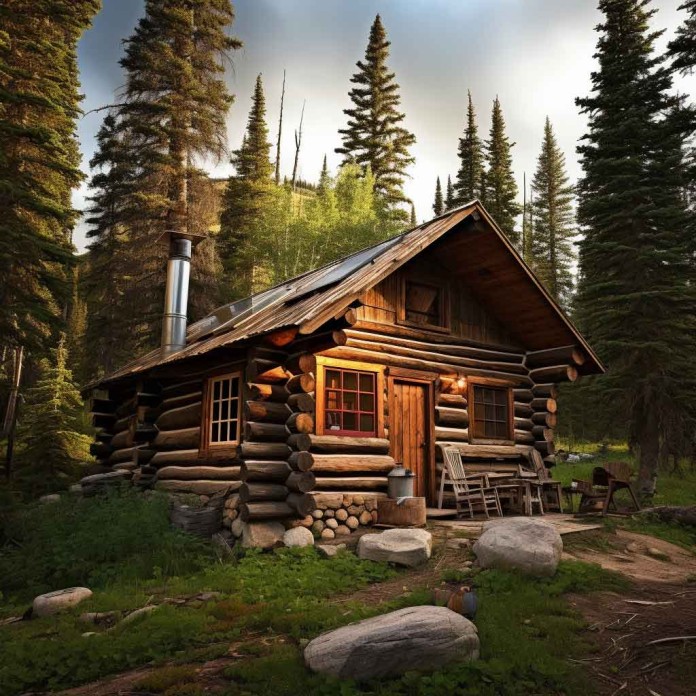This is how to power your off grid homestead. Forever! And never run out of power, never worry about blackouts again. Always have power!
TLDR version: It’s not an either/or decision. It’s best to have both. And, in addition, add a battery backup energy storage system. The best off grid power system is one with the “Holy Trinity” system of renewable energy. The big 3.
#1 is solar
#2 is wind
#3 is battery bank
The battery bank is your “fuel” tank and the sun and wind fill it by funneling that energy into your batteries. You only use your batteries when your solar and wind isn’t producing. The good thing about this system is that when the sun’s not shining the wind is usually blowing (unless it’s a calm cloudy day/night; which is rare). Usually one or the other is available, sun or wind.
#4 is a gas or propane (preferably propane) generator as an emergency backup.
That’s it, that’s all you really need to run everything on your homestead.
NOTE: The wattage and Kwh in your system will vary based on your total energy needs, but the 4 Pillars Of Power system should be the same across the board for every homestead.
If you really want to get crazy efficient, get a small 20′ shipping container and put your battery bank inside, use proper ventilation and insulate it. Mount your solar panels and wind turbine to the shipping container. install your charge controller/sine wave charger and meter, breakers, panel, etc., and that’s a system that will power any home anywhere in the world.
Pretty simple really.
***
Harnessing the “4 Pillars Of Power” in Renewable Energy: A Simplified Guide to Off-Grid Power Systems
In the quest for sustainable and reliable energy solutions, the concept of the “4 Pillars Of Power” in renewable energy has emerged as a game-changer. This approach encompasses the integration of solar power, wind energy, and battery storage to create an off-grid power system that is both efficient and versatile. This article delves into each component of this system and explores how they collectively form an ideal setup for off-grid living.
1. Solar Power: The Luminous Cornerstone
Solar energy stands as the first pillar of this trinity. It harnesses the abundant energy of the sun, converting it into usable electricity. The solar panels, which are typically mounted on rooftops or open fields, capture sunlight and generate direct current (DC) electricity. This DC electricity is then converted into alternating current (AC) through an inverter, making it suitable for home use. The efficiency of solar power depends on factors like geographical location, weather patterns, and the orientation of the solar panels.
2. Wind Energy: The Gust of Innovation
Wind energy serves as the second pillar. Wind turbines capture kinetic energy from the wind, converting it into electrical power. This source of energy is particularly beneficial in areas with consistent wind patterns. The turbines can be erected on or near the property, and their size can vary depending on the energy needs and space availability. Wind energy serves as a perfect complement to solar power, as it often becomes a dominant source of energy when solar power is minimal, like during cloudy or rainy days.
3. Battery Bank: The Energy Reservoir
At the heart of this system lies the battery bank, acting as a storage unit for the energy generated by solar and wind sources. Batteries store excess energy produced during peak sun or wind conditions. This stored energy is utilized when the primary sources are not producing, like during nighttime or calm weather. The battery bank ensures a continuous power supply, making the system reliable and efficient.
4. Backup Generator: The Safety Net
As a fourth element, a gas or preferably propane generator is recommended for emergency backup. This generator kicks in during prolonged periods of low sun and wind activity, ensuring that there is never a complete blackout.
Note on Propane Generator Choice
The preference for a propane generator over a gasoline one is multifaceted. Propane serves not only as a fuel source for the generator but also doubles as a cooking fuel. It has a longer shelf life in storage compared to gasoline, diesel, or kerosene, making it more reliable for long-term storage. Additionally, propane is relatively cheaper and widely available. While it’s true that using propane doesn’t make the system completely “off-grid” due to reliance on existing infrastructure for fuel supply, it’s intended as a secondary or emergency backup. The primary energy sources remain solar and wind, complemented by the battery backup. The propane generator is a pragmatic solution for extended emergencies, like long winters or natural disasters, ensuring continuous power supply when it’s most needed.
The Integration: Creating a Synergistic System
Integrating these components into a cohesive system involves several key steps. Mounting solar panels and a wind turbine to a structure, like a 20-foot shipping container, can create a centralized and compact energy station. This container can house the battery bank, ensuring safety and longevity through proper ventilation and insulation. The inclusion of charge controllers, sine wave chargers, meters, breakers, and panels forms a complete system capable of powering any home, anywhere in the world.
A Blueprint for Sustainable Living
Adopting the “4 Pillars Of Power” system of renewable energy is not just a step towards sustainability; it is a leap into the future of energy independence. This system provides a robust and efficient solution for off-grid living, reducing reliance on traditional power grids and fossil fuels.
It symbolizes a harmonious balance between technology and nature, offering a blueprint for a sustainable and self-sufficient lifestyle. Whether for a remote homestead or an eco-conscious urban residence, this integrated approach to renewable energy stands as a testament to human ingenuity and our commitment to preserving the planet.
You want to power your off grid homestead? Then build a system with the 4 Pillars of Power.

